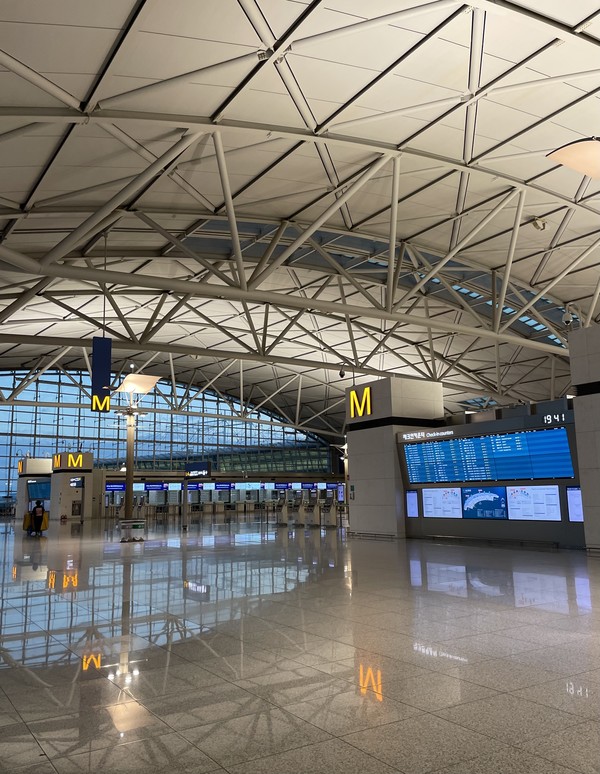Earlier last month, I flew from Incheon to Abu Dhabi. With my flight time being late at night and with COVID-19 travel restrictions, I did expect Incheon International Airport to be less crowded than usual, but I was still surprised to see it so empty. There were only a handful of people in sight. There was no line at the customs inspection. All duty-free stores were closed. The airport was almost dead quiet. I could not believe that this was the same place I had visited in February of 2020 when returning from a previous trip. Having gotten used to a restricted life during the pandemic, there were no longer many moments when I felt like life was not normal, but the visit to the airport brought back memories of what it used to be like and how absurd things have become.

There were so few people in the plane that everyone was given a whole row. One of the major perks of being a small person is that I always have enough leg room, but I still appreciated the extra space and being able to lie down to sleep. Along with the usual safety videos, there was a video about COVID-19 precautionary measures. All passengers had to wear masks at all times and practice social distancing when using the restroom. Yet food was served, and most people took down their mask and ate it. Like many precautionary measures on land, those in flight also seemed to be in place for obligatory reasons only, without proper consideration given for their efficacy.
When I arrived in Abu Dhabi, the airport was even more empty. As most people stop at Abu Dhabi only for a short layover, when I left the terminal to get my luggage, there were less than ten people in the baggage claim area. Upon stepping outside of the airport gate, the first thing I had to do, of course, was another PCR test. All teary-eyed, I was sent to a hotel for quarantine. Luckily, South Korea is one of the “green list countries” here, so I only had to quarantine for a day until my PCR result came out. While I was locked in, I got curious and did a bit of research on COVID-19’s impact on the aviation industry. The results were quite devastating indeed.
The COVID-19 pandemic has had an unprecedented devastating blow on the industry. Commercial aviation took a particularly hard hit, as most countries closed their borders. In March 2020, when the World Health Organization declared COVID-19 a pandemic, international passenger capacity was reduced by half compared to the 2019 level. As the number of cases surged worldwide, in April 2020, the number dropped by 94%. In 2020, world total passenger traffic decreased by 50%, causing approximately 371 billion USD loss of gross passenger operating revenue. Airlines lost a net profit of 126.4 billion USD in 2020, and airports suffered a 125 billion USD loss in gross revenues.
The road to recovery seems vulnerable and volatile. The duration and magnitude of outbreaks, containment measures by the governments, degree of consumer confidence of air travels, and economic conditions are all key factors at play. With the roll out of vaccines, there were optimistic forecasts on recovery later this year, but with new variants continuously on the rise, it remains uncertain how soon we will be able to recover. Many airlines planned resumption of flights, but half were subsequently withdrawn. According to International Air Transport Association (IATA)’s predictions, recovery of traffic will overall be limited for 2021 due to travel restrictions. With widespread vaccination and lifting of travel restrictions expected throughout 2022 and 2023, more rapid recovery in demand and flight operations will likely take place from 2022 onwards.
Because my life was among those less impacted by COVID-19, it was easy to forget that we are living in unprecedented times. International travel and quarantine reminded me of how things I took for granted before COVID-19 were precarious. Despite the long queues and busy crowds, we were freer back then. Even more so than the physical distance, it’s the quarantine regulations and uncertainty of being able to receive a travel approval that make me feel far away from home. Will life slowly go back to normal by 2022, as IATA predictions said? Who knows? The best we can do is to hope, albeit in vain, that things will get better, and there will come a time when we can travel freely again.

